|
The Hayward Fault
Walk
in Central Park, Fremont
joint project with
Math Science Nucleus, City of Fremont, U.S. Geological Survey,
California Geological Survey

|
 |
|
9000 Years of Movement
In 2006, a large pit was trenched in this
area on the Hayward Fault. The rocks revealed that about
9000 years ago there was a large stream flowing about
150 feet from the current location. Creeping movement of
the fault over the years, about 5 millimeters per year,
has offset the sediments over time. On the ground
surface, this type of active movement can still be seen
in the parking lot with many offset curbs and en echelon
structures (cracks from fault creep) due to the stress.
To learn more about en echelon structures, refer to the
adjacent sign “En Echelon Structures”.
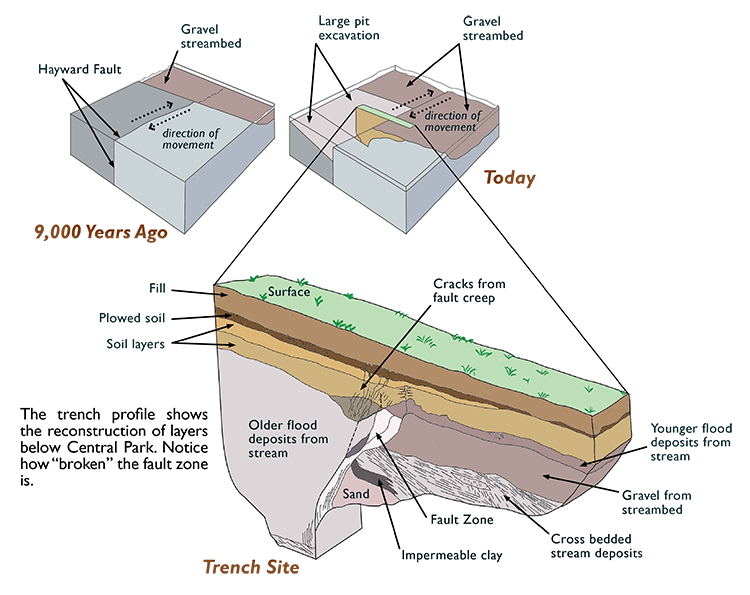 |
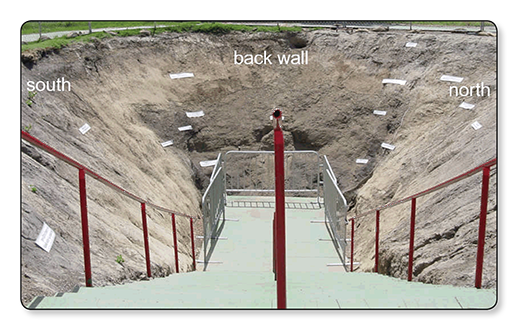
see a virtual tour of the trench
click here |
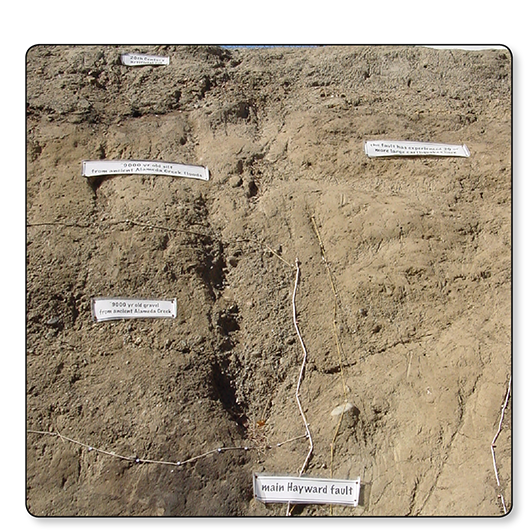
Offset Layers of Rock and Fault Trace
|
To
the west of the fault the sediment is dark in color, gravelly and
sandy, and has visible layers (these are the 9000 year-old creek bed
for ancient Alameda Creek. To the east of the fault the sediment is
tan, and has little gravel or visible layers (these are flood
sediments from Alameda Creek 4000 years ago). They are different
because due to fault movement, two parts of the earth from different
areas have been brought next to each other. |
En Echelon Fractures
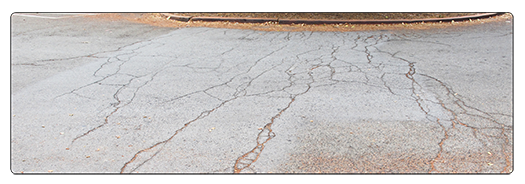
En echelon fractures are tension fractures that form
ribbons of migrating parallel cracks. These fractures
are seen throughout the parking lot. The cause of these
fractures are from strike-slip movement of rigid blocks
in opposite directions. |
|
Constant stress due to creeping movement
along opposite sides of Hayward Fault cause concrete curbs to
break and then constantly move over time.
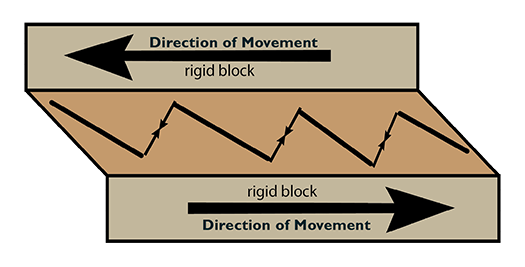 |
When blocks of the Earth’s
crust pass each other it causes stress. If asphalt is
above a “creeping” motion it will buckle and break into
“en echelon” patterns. Currently, the creep rate in
Fremont is about 5
millimeters per year.
|
Imagine
you are lying on a couch watching television. Suddenly the
television starts to rattle back and forth. At first you think
it must be a large truck or a low flying plane. However, instead
of fading away, the shaking gets stronger. Books and picture
frames start falling off the walls. You try to stand, but the
shaking is so strong that you cannot balance yourself. You end
up on the floor and you hide under a strong table. Gradually the
shaking stops and you can stand up again. You run outside. A
nearby building has collapsed. Experiencing an earthquake of
Magnitude 7 or higher is one of the most frightening events you
may ever experience.
WEB SPONSOR
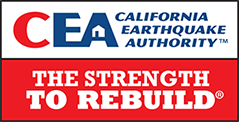 |
The California Earthquake
Authority (CEA) is a not-for-profit, privately funded, publicly managed
organization that provides residential earthquake
insurance and encourages sells Californians to reduce
their risk of earthquake lost. Learn more at
EarthquakeAuthority.com. |
Math/Science Nucleus
4074 Eggers Drive, Fremont, California, U.S.A., 94536
(510) 790-6284
msn@msnucleus.org
|
|
|
|